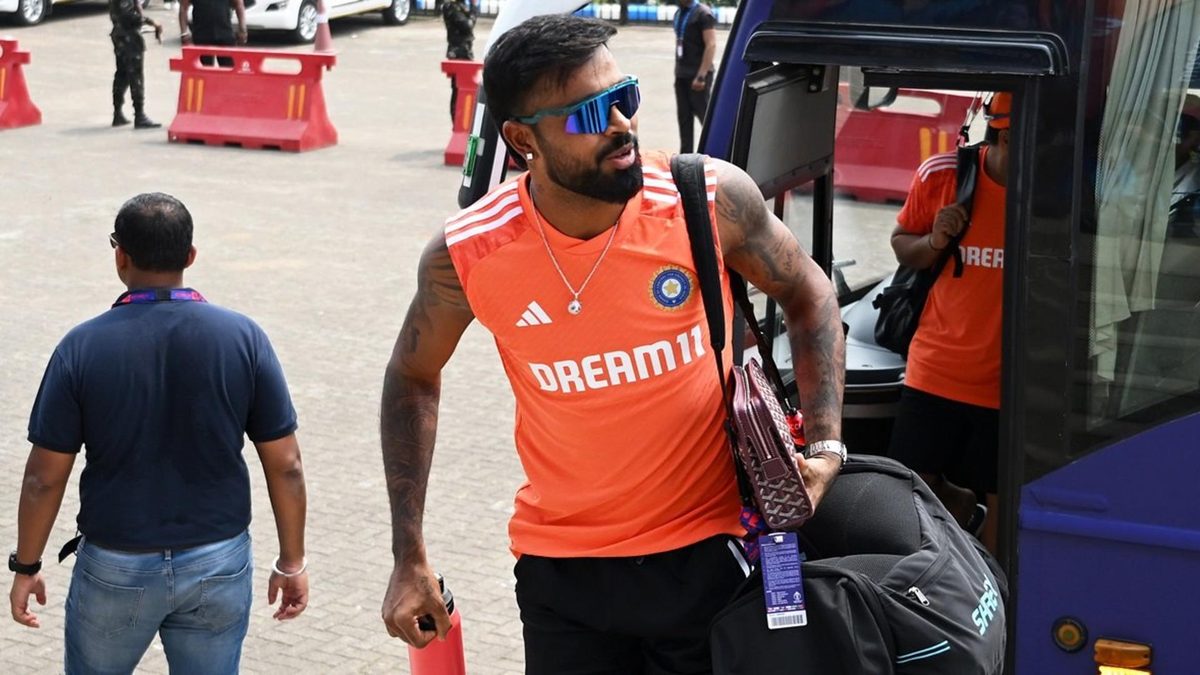
With and without the injured Hardik Pandya, India have been the team to beat at the World Cup. When he returns they have some decisions to take, writes Abhishek Mukherjee.
To bet on the World Cup with our Match Centre Partners bet365 head here.
Hardik Pandya had bowled only three balls against Bangladesh before an injury ruled him out of the rest of the match as well as India’s subsequent fixtures, against New Zealand and England.
India did not miss Pandya against Bangladesh, for he was one of six bowlers in their XI. Virat Kohli finished his over, and then their five bowlers restricted Bangladesh to 256-8, and Pandya the No.6 batter was not needed in the chase.
India do not have a like-for-like replacement for Pandya, a seamer who can bowl at any stage of the innings and a hitter at No.6 (the fielding is a bonus), in the squad or in the country. Their options in general, for an ODI-quality top-six batter who can bowl reliably at any point, are significant downgrades, but include the likes of Washington Sundar, Axar Patel, Tilak Varma, Shivam Dube and Vijay Shankar.
Still, there were options for how to cover for his absence. They could have replaced him with R Ashwin, but that would have meant moving Ravindra Jadeja to six, followed by Shardul Thakur and Ashwin, weakening their batting considerably. So they chose to bring in a batter, Suryakumar Yadav. That kept their top six as strong as possible, but depleted the Indian attack by one full bowler. They addressed that by replacing Thakur with the superior fast bowler, Mohammed Shami.
With nine wickets in the next two matches, Shami took the 2023 World Cup by storm. Jasprit Bumrah, Mohammed Siraj, Shami, Jadeja, and Kuldeep Yadav currently form arguably the most devastating bowling attack at this World Cup.
With six wins in six matches, India sit are perched at the top of the points table. All seems well at this point, but India will be wary of at least two problems.
First, the tail. At No.8, Shami bats one, perhaps two places too high. Chasing 274, India were 191-5 against New Zealand when Jadeja joined Virat Kohli. They were one wicket away from their four-member tail being exposed with over 80 runs to score, but Kohli and Jadeja prevented any damage. Against England, too, India were six down inside 41 overs, and added only 47 in the last 57 balls.
But the greater worry is India’s lack of batters who can bowl. India are going into every match with exactly five bowlers, no more. If one of them breaks down early into his spell a la Pandya against Bangladesh, they will be forced to have the non-bowlers fill in for about a fifth of the innings.
Either scenario will expose them to the stronger sides of the tournament. Until now, India have covered up for their perilous lack of balance with dazzling performances with bat or ball, but one bad day may undo all of that. It is, thus, crucial for Pandya to return to the XI.
But what happens when Pandya returns? Whom does he replace?
Surely not a bowler, of course. While that will address the problem of the weak tail, it will compound the other: instead of having five fit bowlers, they will be left with four, along with an all-rounder returning from injury. The price will not be worth the investment.
A simple option will be to bring him in for one of the batters. As death-over hitter, Pandya should ideally replace Surya, but Shreyas Iyer’s form (134 runs at 33.50 in the World Cup) has been a concern. Surya, on the other hand, made 49 on a difficult pitch against England.
If indeed Iyer sits out, Pandya, Surya, and Jadeja can bat between five to seven in any order. That will address India’s bowling conundrum, for they will get their sixth bowler.
At the same time, India will be replacing Iyer (average 45) with Pandya (34). Even if they drop Surya (and retain Iyer), they will still replace a champion batter at the death overs – the phase where the line between ODIs and T20 gets blurred – with an all-rounder, returning from injury, expected to chip in with six or seven overs of pace.
Either way, it will be a compromise in batting. The only way to address this is to reduce the size of the tail from four to three batters. For that, they need to draft in Thakur or Ashwin depending on the conditions or the opposition. For that, the axe is likely to fall on Siraj.
The leading wicket-taker in ODIs between the starts of 2022 and the World Cup, Siraj had leapfrogged Shami as Bumrah’s first-choice new-ball partner. Six matches into the World Cup, Siraj has taken six wickets at 48.33 apiece. While those numbers don’t fully reflect the quality of some of his spells, Shami has been irresistible.
But what if Pandya does not become match-fit before the league stage gets over? There are options, of course, though none as good, but that bridge can be crossed once the team management gets there.








